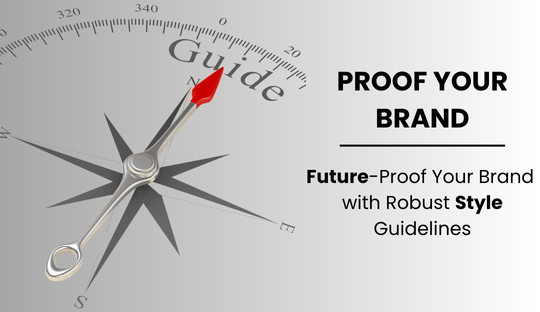
Future-Proof Your Brand with Robust Style Guidelines
In today’s dynamic market, maintaining a consistent and compelling brand presence is crucial for long-term success. Flykez CO, a leading creative brand company in North Macedonia, understands the importance of establishing robust brand style guidelines. These guidelines ensure that the brand remains cohesive, recognizable, and adaptable to future changes. Here’s how to future-proof your brand with effective and comprehensive style guidelines.
The Importance of Brand Style Guidelines
Brand style guidelines are essential for maintaining a consistent visual identity and brand personality across all platforms. They serve as a blueprint for how your brand should look, feel, and communicate, ensuring that every piece of content aligns with your overall brand strategy. For Flykez CO, robust brand style guidelines will support services such as website design & development, search engine optimization, brand design & brand identity, digital marketing, and UI & UX design.
Key Components of Effective Brand Style Guidelines
1. Brand Identity and Core Values
Begin your brand style guide by outlining your brand’s identity and core values. This section should articulate your brand’s mission, vision, and values, providing a foundation for all branding efforts. Consistently reinforcing these elements helps establish a strong brand personality that resonates with your audience.
2. Logo Usage and Specifications
Your logo is the cornerstone of your visual identity. Specify detailed guidelines on logo usage, including size variations, color options, and placement rules. Ensure that your logo is used consistently to reinforce brand recognition. Include clear examples of both correct and incorrect logo usage to avoid any confusion.
3. Color Palette
Define your brand colors with precision. Provide exact color codes (RGB, CMYK, Hex) for primary and secondary colors. Consistent use of brand colors is crucial for creating a cohesive visual identity. Highlight how and when each color should be used to maintain brand integrity.Also Read About Creating Brand Style Guidelines: Dos and Don’ts
4. Typography
Typography plays a significant role in your brand’s visual appeal. Specify the fonts to be used for different purposes, such as headings, body text, and captions. Ensure consistency by detailing font sizes, weights, and styles. This helps in creating a professional and uniform look across all brand materials.
5. Imagery and Graphics
Outline guidelines for using images and graphics that align with your brand’s visual identity. Specify the style of photography, types of illustrations, and any particular visual elements that should be incorporated. Consistent imagery enhances brand recognition and visual appeal.
6. Voice and Tone
Your brand’s voice and tone are integral to its personality. Define how your brand communicates with its audience, including language style, tone (formal, casual, friendly, etc.), and key messaging points. Consistent communication builds trust and strengthens brand loyalty.
Best Practices for Future-Proofing Your Brand
1. Stay Updated with Trends
To keep your brand relevant, stay updated with the latest design and marketing trends. Regularly review and update your brand style guidelines to incorporate new trends and technologies. This ensures that your brand remains contemporary and appealing to your audience.
2. Flexibility and Scalability
While consistency is key, allow some flexibility within your guidelines to adapt to new platforms and mediums. Scalability is essential for growth, so ensure your guidelines can be easily adapted to new formats and channels as your brand expands.
3. Accessibility
Incorporate accessibility standards into your brand style guidelines. Ensure that your visual elements and content are accessible to all users, including those with disabilities. This includes considerations for color contrast, readable fonts, and descriptive alt text for images.
4. Training and Implementation
Provide training for your team on how to use the brand style guidelines effectively. Ensure that everyone involved in creating brand materials understands and adheres to the guidelines. This will lead to more consistent and effective branding efforts.
5. Gather Feedback and Iterate
Encourage feedback from your team and stakeholders on the usability of the brand style guidelines. Use this feedback to make necessary improvements and ensure that the guidelines remain user-friendly and effective.
Conclusion
Creating and maintaining robust brand style guidelines is crucial for future-proofing your brand. For Flykez CO, these guidelines will ensure a consistent and compelling brand presence across all platforms, supporting your services and helping you stand out in the competitive market. By following these best practices, you can create a cohesive and adaptable brand that resonates with your audience and stands the test of time.
Embrace these strategies to future-proof your brand and ensure long-term success in the ever-evolving digital landscape. For more information on how Flykez CO can help with your rebranding needs, visit www.flykez.com.
